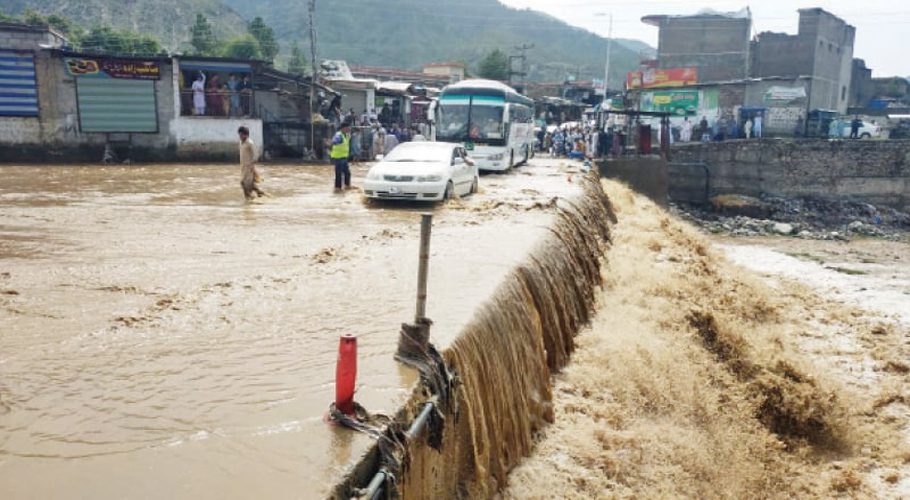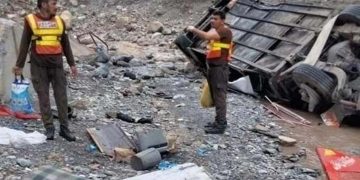The Most In-depth Article I have Written In The Most Simplistic Manner On CPEC For All To Understand.
China Pakistan Economic Corridor-The moment you speak of CPEC, two reactions are generated mostly. Majority of Pakistan knows the benefits of this historical macro project but there is a minority whom out of lack of knowledge or perhaps a political rivalry, or maybe out of their own confusion, spreads rumors, albeit unfounded ones, about CPEC.
This article of mine aims to clarify the myths about CPEC.
Let us begin with the most basic facts. The moment one thinks of CPEC an image of Gawadar port comes to mind. Justifiably so perhaps because we have promoted Gawadar Port as the crown of CPEC. But to me, CPEC is much bigger than Gawadar. Gawadar perhaps is the heart and CPEC the entire body. One cannot function without the other but the body in proportion remains 98% bigger than the heart. CPEC is a project which through One Belt One Road, OBOR, will connect 40 countries’ economies within the region creating a $2.4 trillion dollar GDP growing at 7% a year according to The World Bank. Perhaps this is the reason why our neighbor is extremely suffering from angst and anxiety. The future of the world is no longer through conventional wars, the future is economic dominance and conventional wars will pale in comparison economic superiority. Simple reason, economic betterment gives might to a country overseas and peace within its boundaries. Take the economic might out of the American equation and there goes its Pentagon dominance, financial dominance, GDP dominance and trade dominance along with a peaceful nation busy in making their lives better.
The Importance Of A Port, Any Port:
How does one evaluate the importance of a port. Actually there are three categories which, if fulfilled, can declare a port an asset.
- Depth
- Number of Berths
- Labor Cost
The depth of a port, specially a warm water port, is of an extreme high value because the depth determines the size of the ships it can berth. The number of berths determine how many ships at once can be berthed at a port. The labor cost around the port area determines how expensive or cheap it would be to operate a port. A port in the middle of America has a different operating cost than a port in Africa with an abundance of cheap labor. But perhaps the port has cheap labor but not the depth. Maybe the port is a deep water port with cheap labor but a limited number of berths for the ships.
If a country has a deep water port, with extraordinary number of berths and cheap labor-bingo, you have hit the jackpot. And Gawadar is that jackpot.
Let us be fair and compare.
Jabel Ali Port, the jewel in the crown of Dubai’s economic activity is only 9 meters deep with plans of Terminal 3 expansion to 17 meters depth with a total of 67 berths.
Bandar Abbas Port with a depth of 14 meters has a berthing capacity of 5 ships. Yes you read it right. Five ships.
Damam Port in KSA at completion of expansion will have a depth of 16 meters with a maximum berthing capacity of 21 ships.
Qatar Doha Port is just 30 feet. Yes 30 feet with a berthing capacity of 34 small sized ships.
Chahbahar Port of which we have heard so illogically over the years that it is a prime competitor of Gawadar Port has a depth of its Channel at 76 feet and Cargo Pier, where the ships are docked has a depth of 1.8 to 3 meters.
Let us compare the above facts with The Gawadar Port.
When it started the depth was 11.5 meters. Currently the depth is 14 meters. The final depth will be 19 meters. The DEEPEST port in the region with a final berthing capacity of will be 150 berths. Yes you read it correctly. Gawadar will be the biggest port with the deepest waters and the lowest cost of labor compared to all its peers in the region. Of course India and some others will have a serious problem with this marine trade dominance.
Imagine 150 large sized ships maneuvering their way in and out of Gawadar port full of goods to be traded in the 40 different countries within the region. Forget Jabel Ali. Forget Dammam. Forget Chahbahar or even forget Salala Oman. Gawadar Port will be the king. And the world wants the King to be destroyed before it is crowned. Specially India.
Chinese Oil Trade & The Gawadar Port: The Future Is Here
China is an oil consuming country. It consumes 10.3 million barrels a day of oil. And the irony is that it imports this amount from several different routes. 51% of its oil is imported through The Straits Of Malacca through the Middle East. 82% or about $400 million dollars of thus 51% of the oil takes 100 days to reach the refineries, mainly in Shanghai. 100 day journey means 120 days turnaround time for the refineries to collect their money after the entire process is over and the oil is shipped.
With Gawadar Port the total journey time will be 28 days till the oil reaches the Chinese refineries. In financial terms it means that Gawadar alone can handle $60 billion of oil imports year. Is that a small number of a port ? Absolutely not. And we are only talking about oil here, not the total trade.
Xinjian Province Trade-Bordered With Pakistan.
The Western part of China bordering Pakistan is an autonomous region of China whose GDP is 1 Trillion Yuan growing historically at an unprecedented 11% a year. This economy bordering Pakistan with a road network of OBOR connecting 40 different countries including Pakistan will create a $2.4 trillion dollar economy. OBOR is much bigger than CPEC. CPEC though is the jugular vein of OBOR. Without CPEC and Gawadar, OBOR becomes landlocked. Iran now has entered into OBOR with a $620 billion 25 year trade and investment deal with China. Iran is our neighbor and will be connected to the world through the Gawadar Port and the web of highways laid down across the region.
Now The Indian Problem
Amongst many let me identify the economic ones. It is an old economic strategy that when you cannot compete with the future of a nation you try to sabotage it. There is no way that Pakistan can quadruple its GDP size as fast as it can do it through CPEC. It is also an economic fact that once Pakistan becomes part of a 40 nation unofficial economic union then poverty alleviation and eradication of terror forever will be easily accomplished. And perhaps India not being part of CPEC or the OBOR will be left behind for decades to come. Most of the CPEC goes through areas like AJK or GB. The state that borders this boundary line if Arunachal Pradesh. When the people of Arunachal Pradesh see the economic benefits of CPEC passing through their neighbors, there is bound to be a feeling of resentment and that feeling of resentment is not a good sign for any party in power in India.
Economic wars are the future of the world. And the word war should not be used in a conventional manner here. The bombs will not destroy areas geographically in an economic war, the economic bombs will destroy the futures of nations IF and WHEN they are dropped in a country. Countries that plan their economic future with macroeconomic strategies and unite as unions, officially or unofficially will succeed.
CPEC is that strategy. CPEC is that economic union of 40 countries. CPEC is the future. CPEC is the macroeconomic plan for the future of Pakistan. Of course, India is sitting in a frying pan where it cannot even jump out of it into a fire, even if it tries.





























